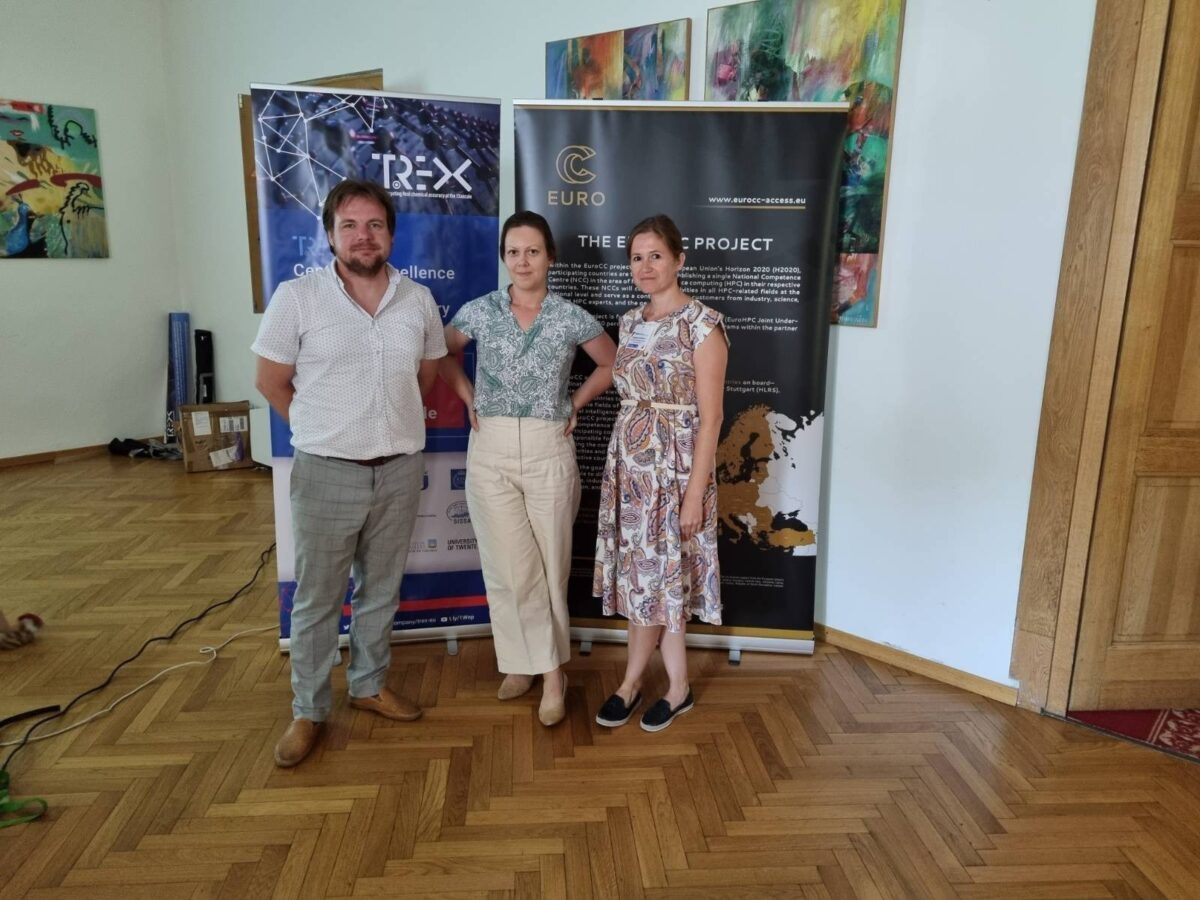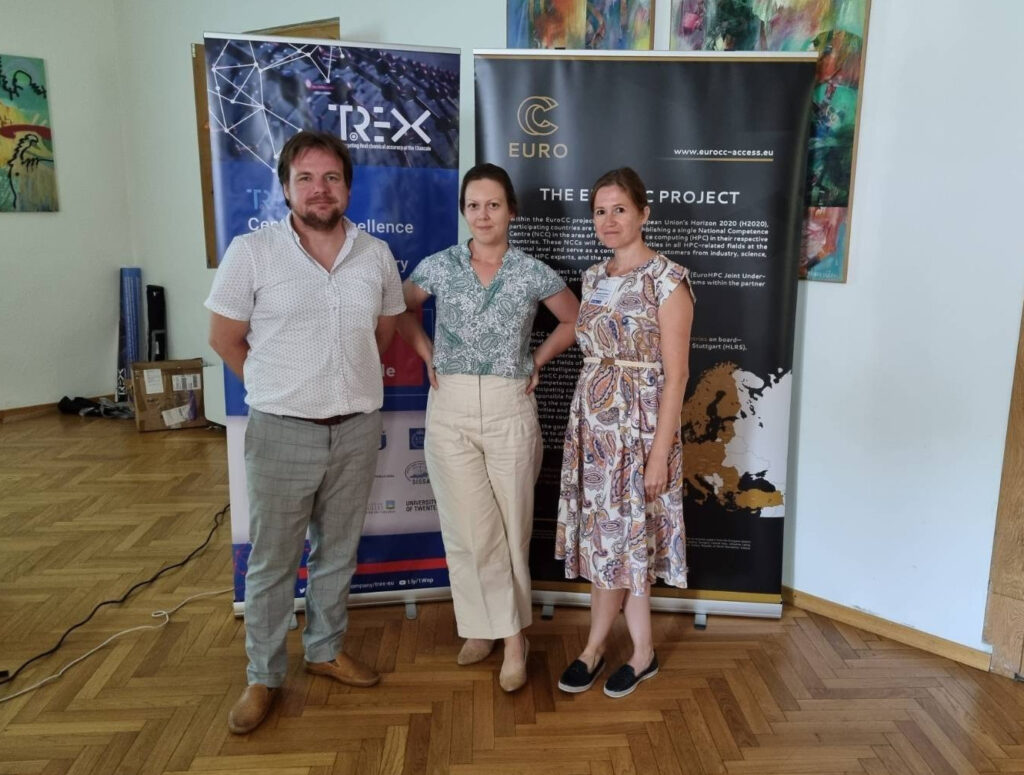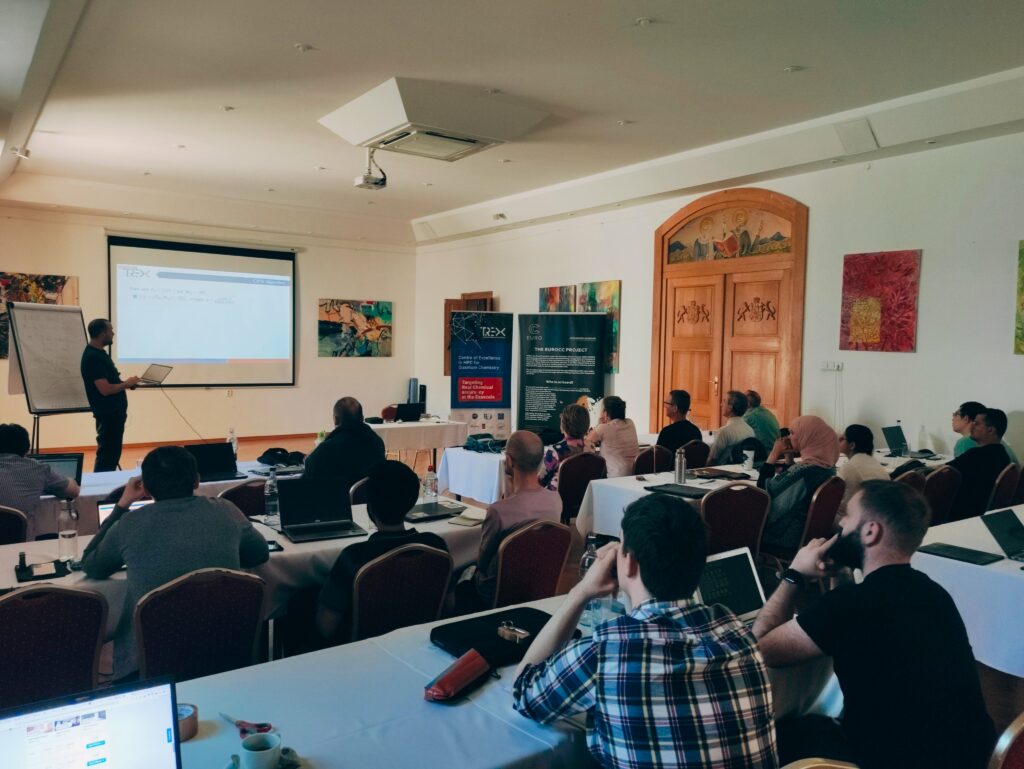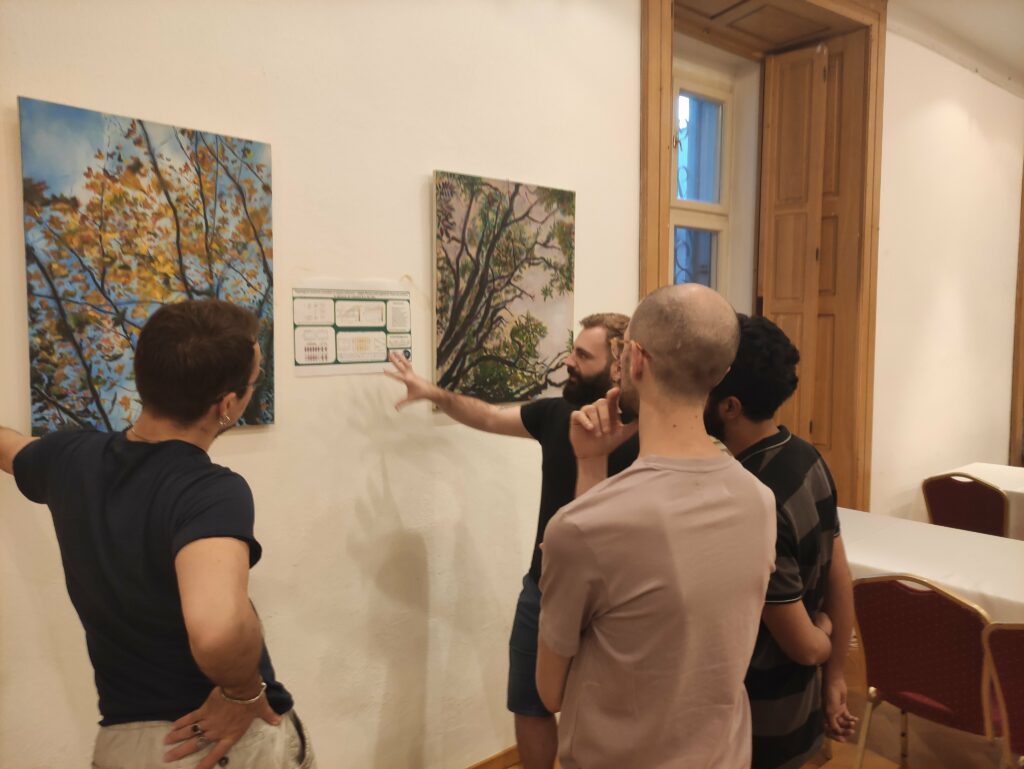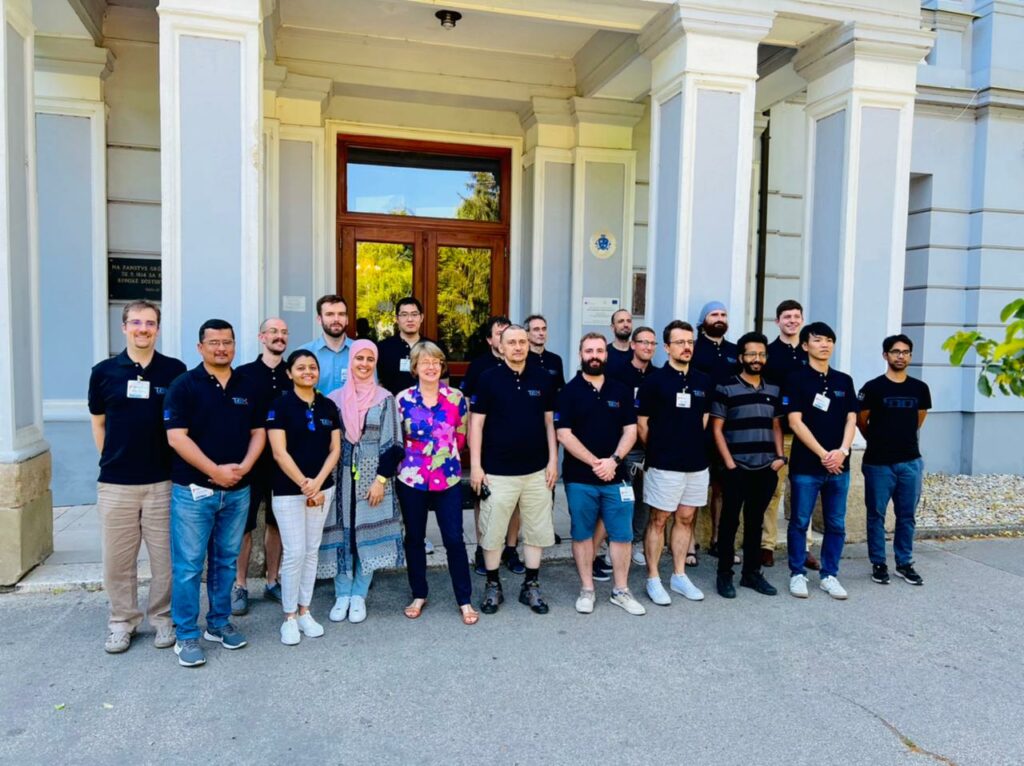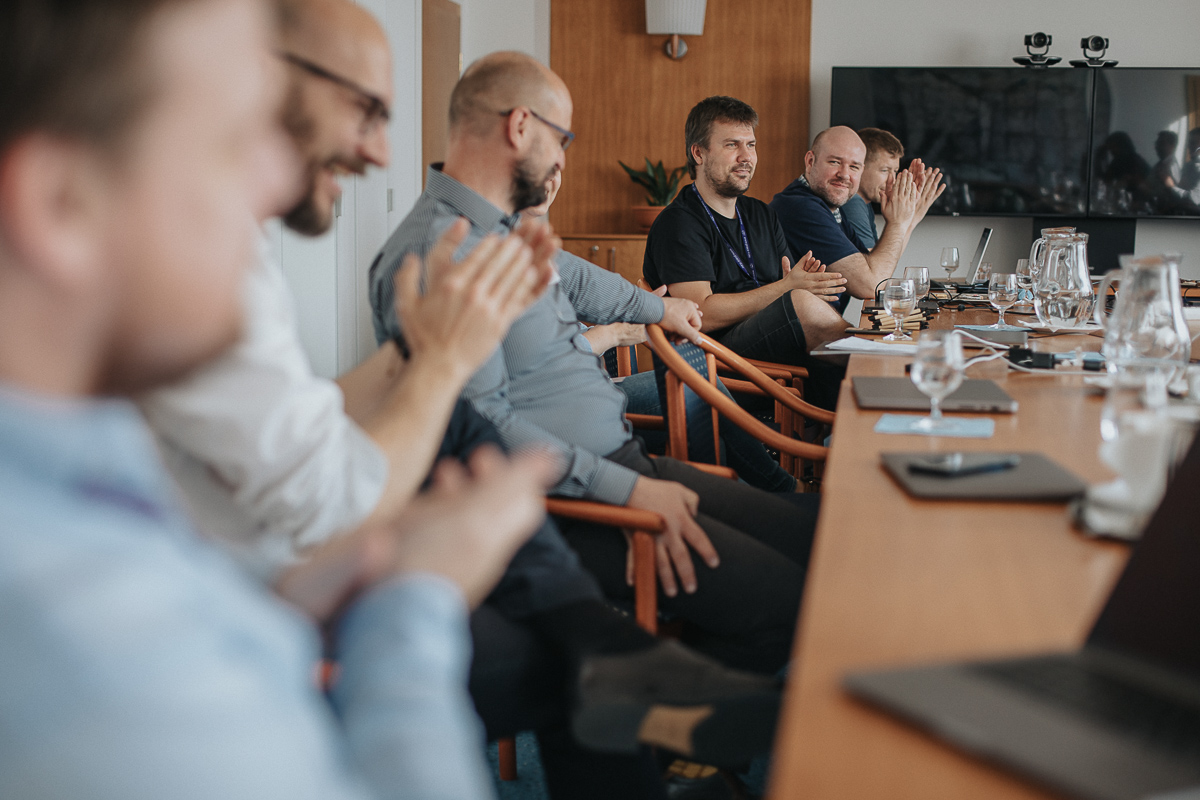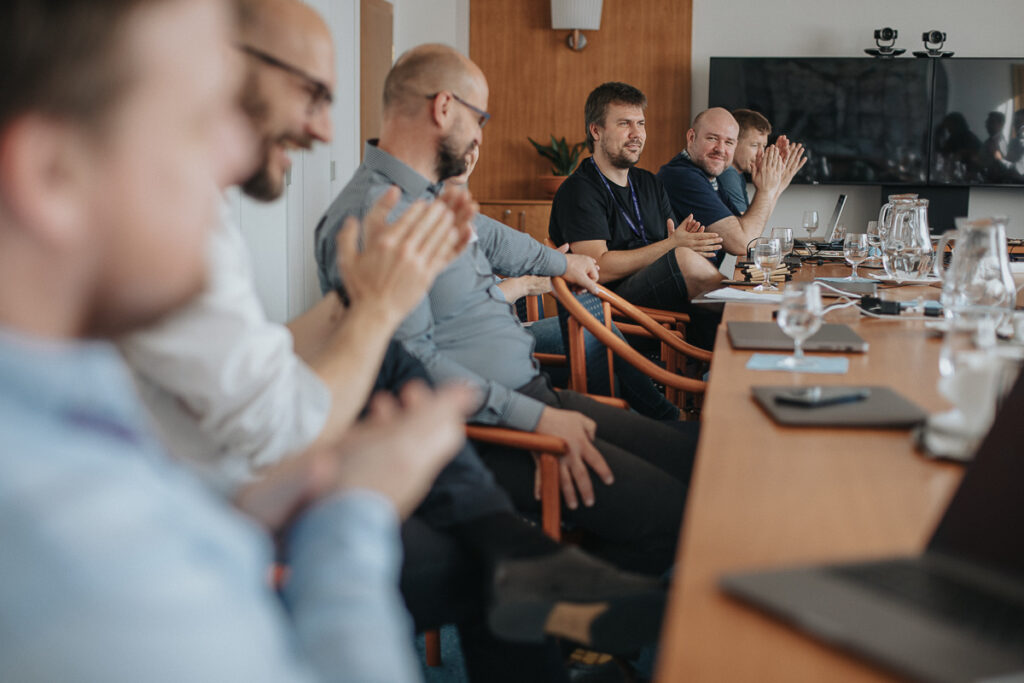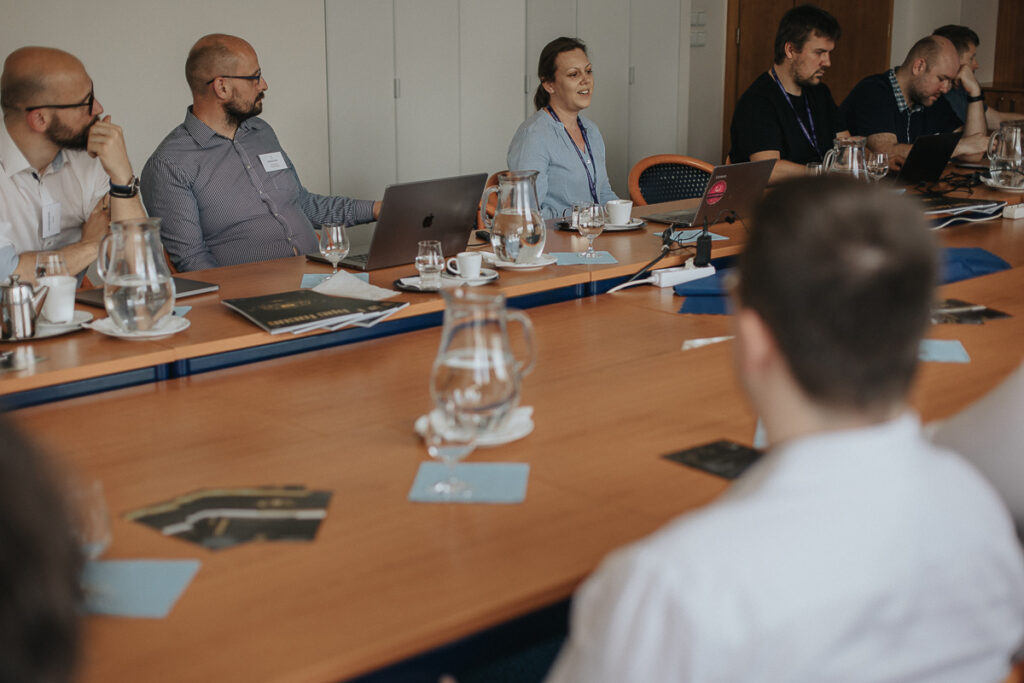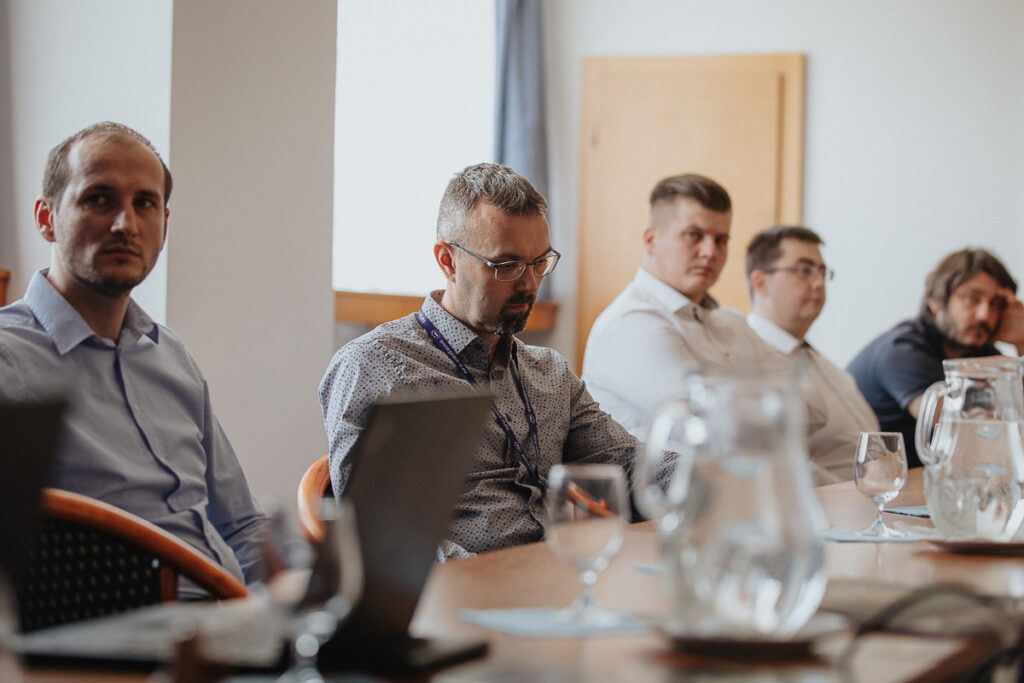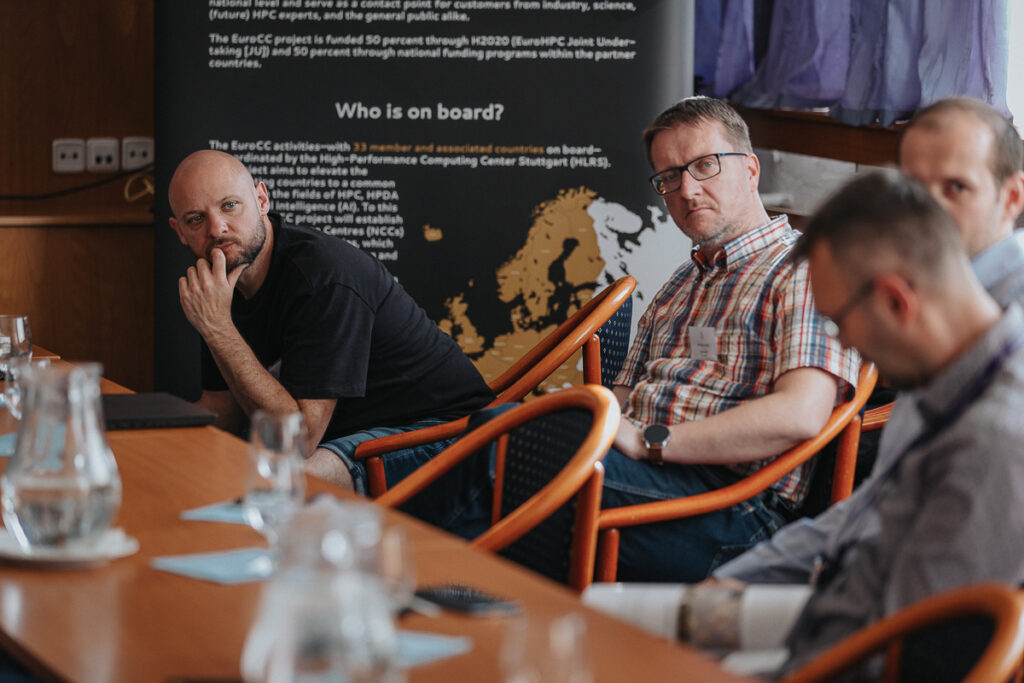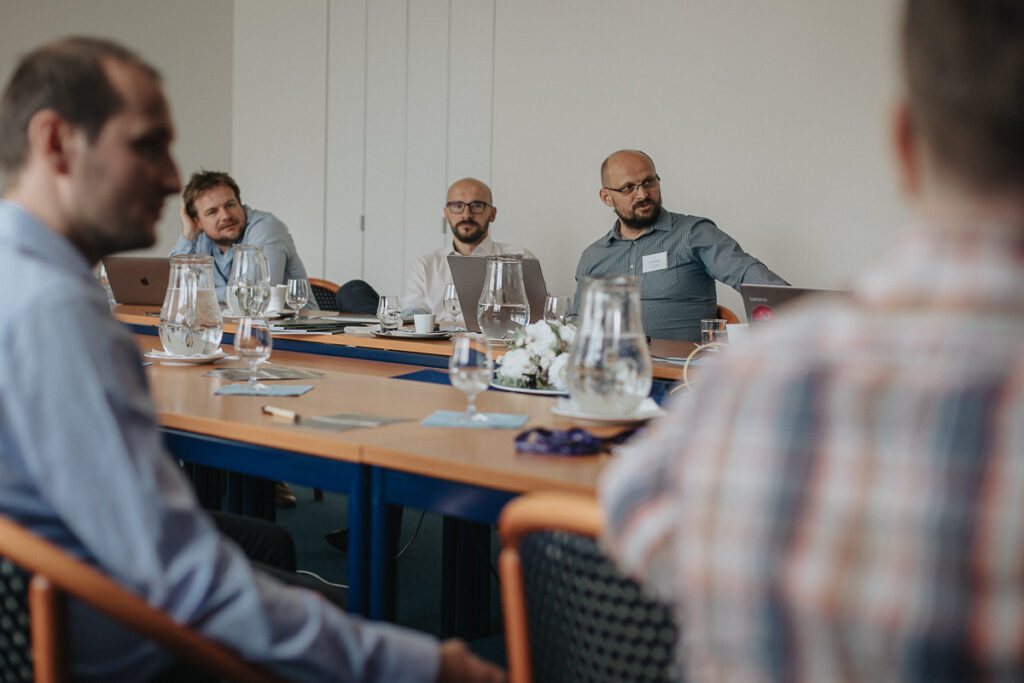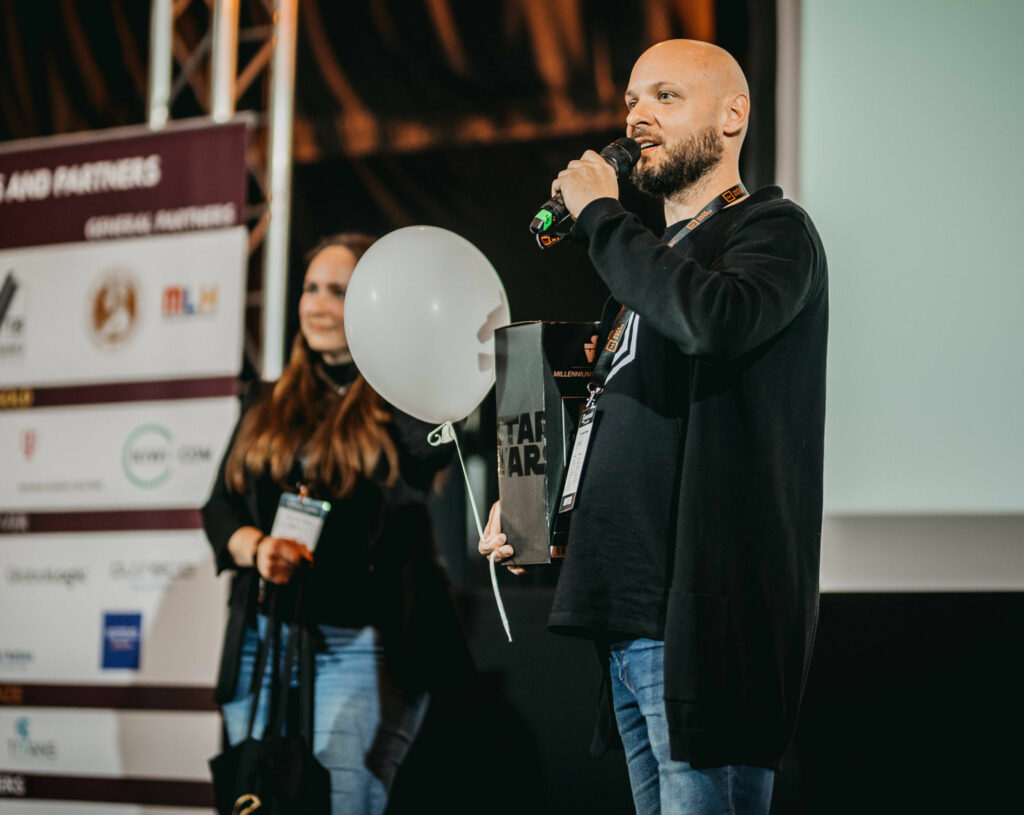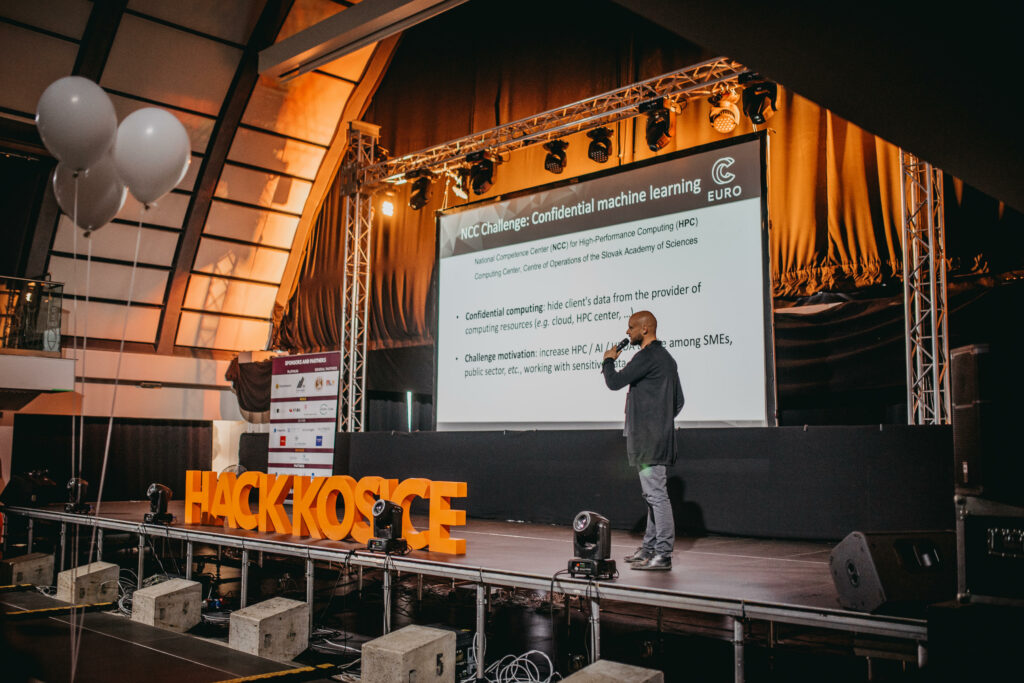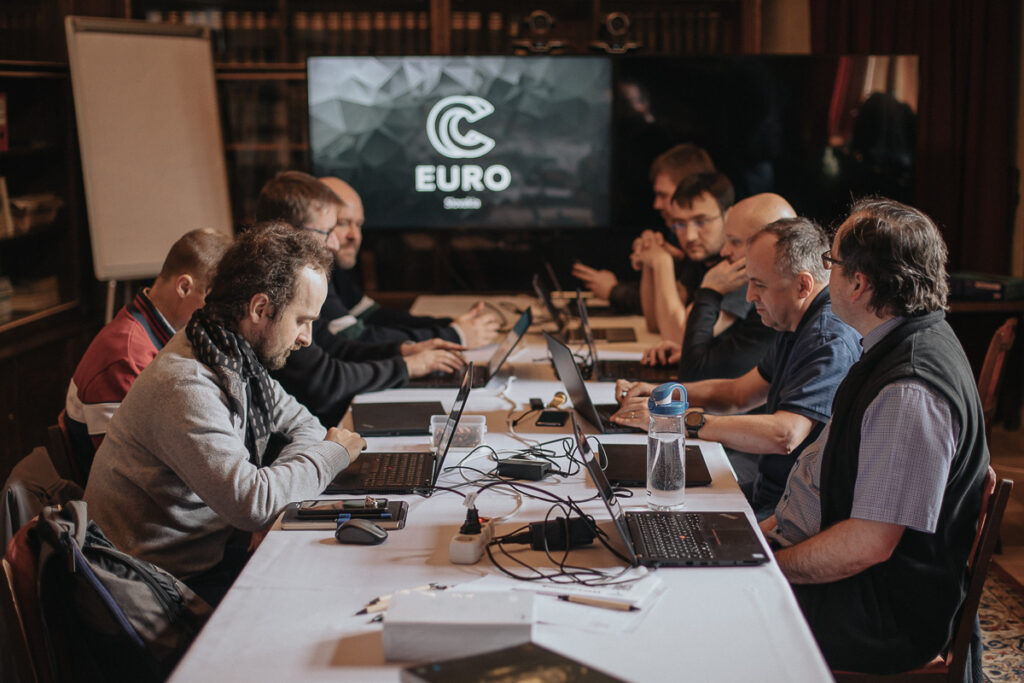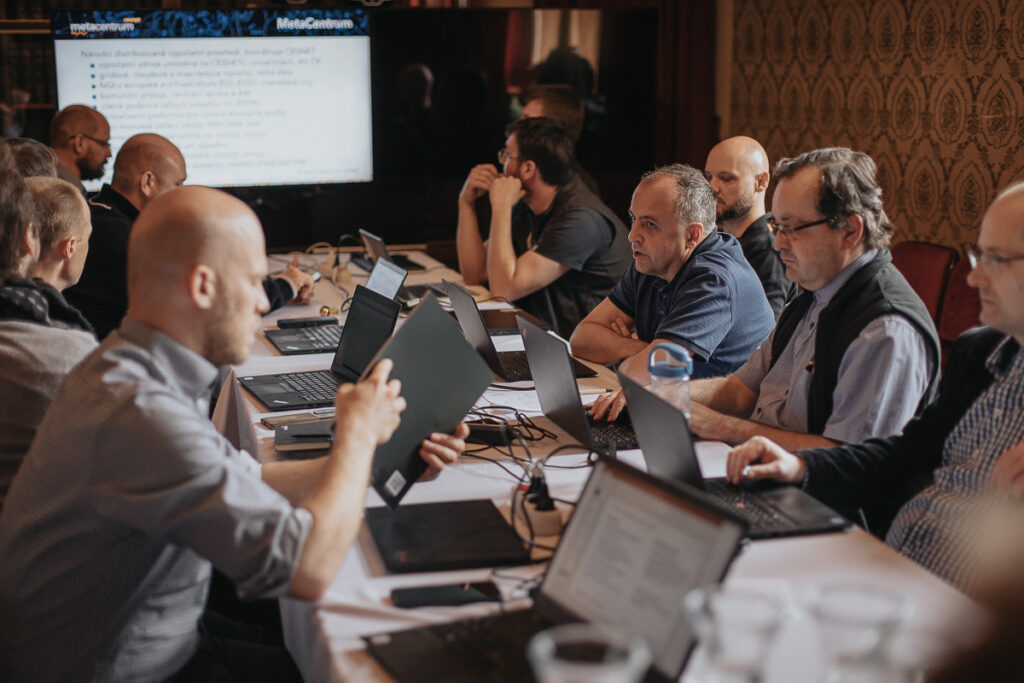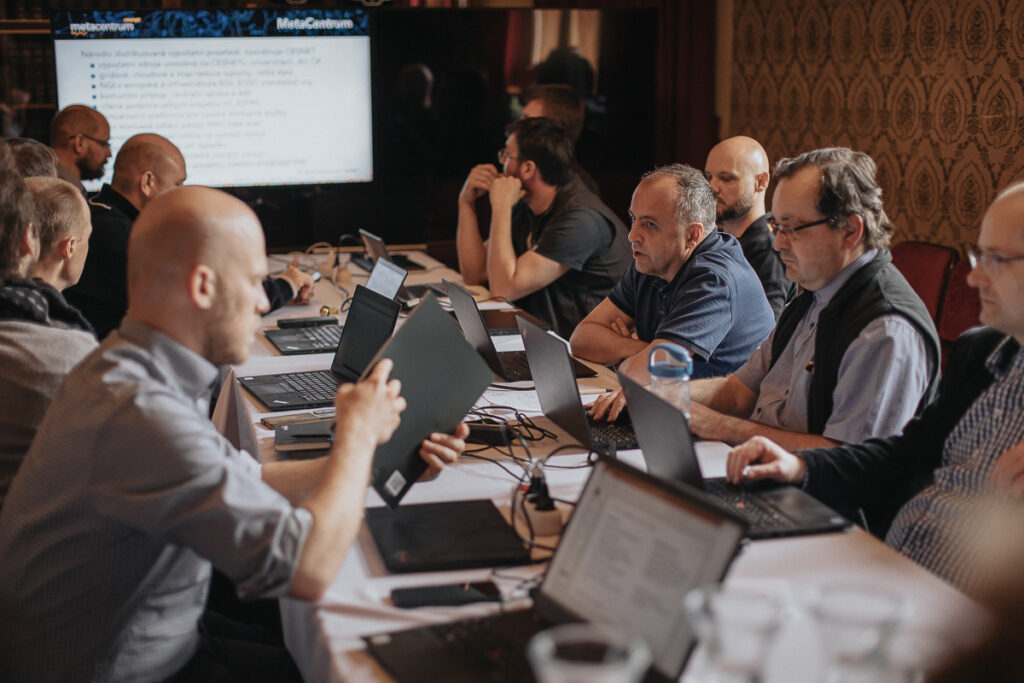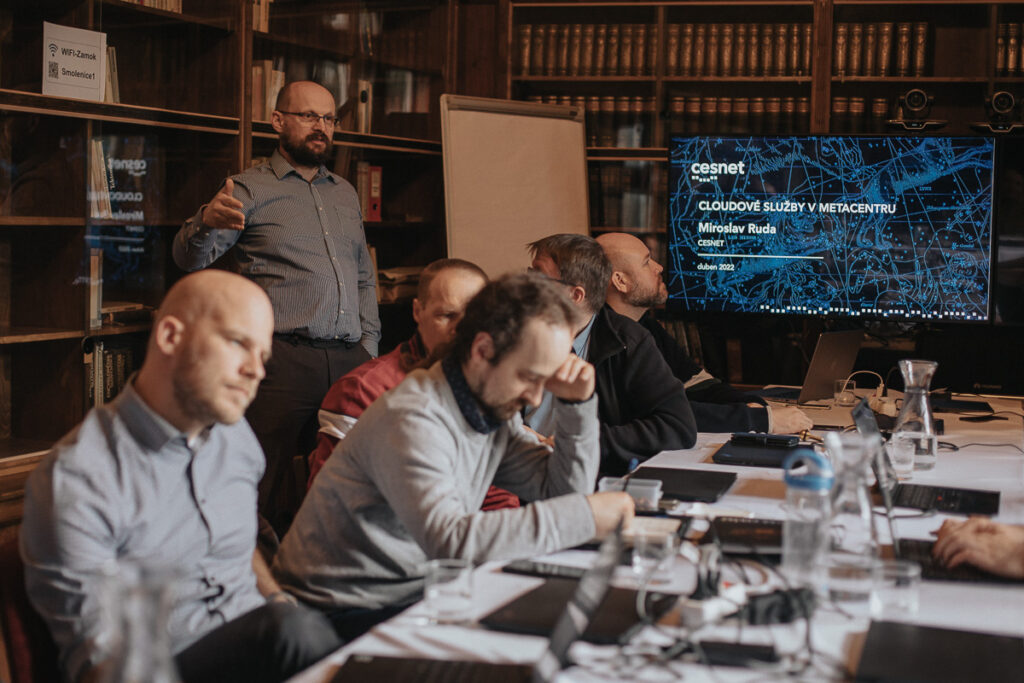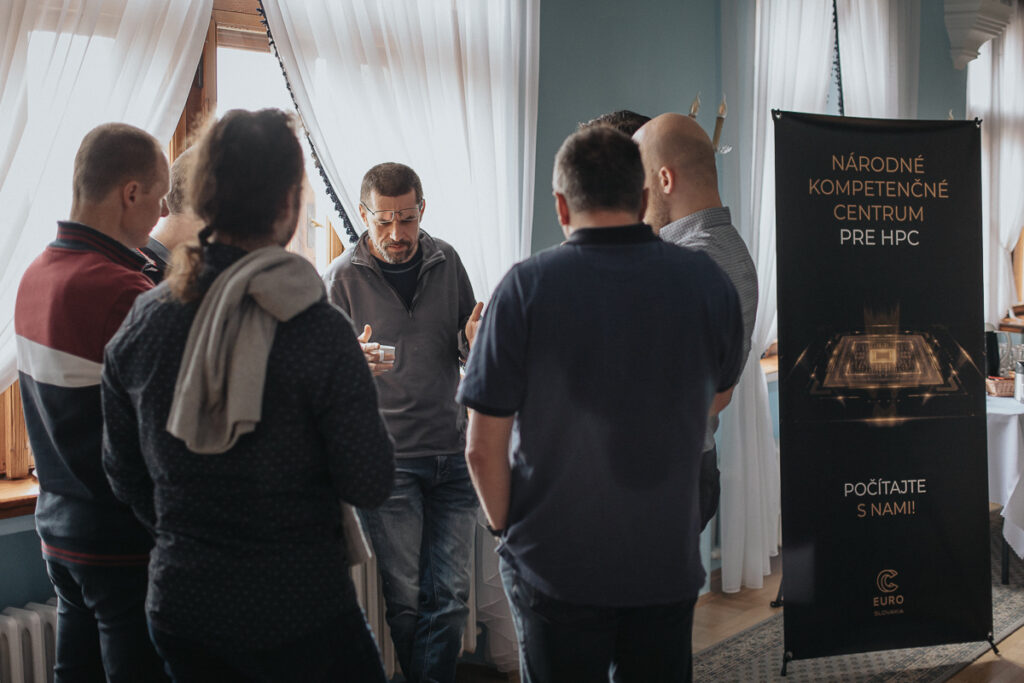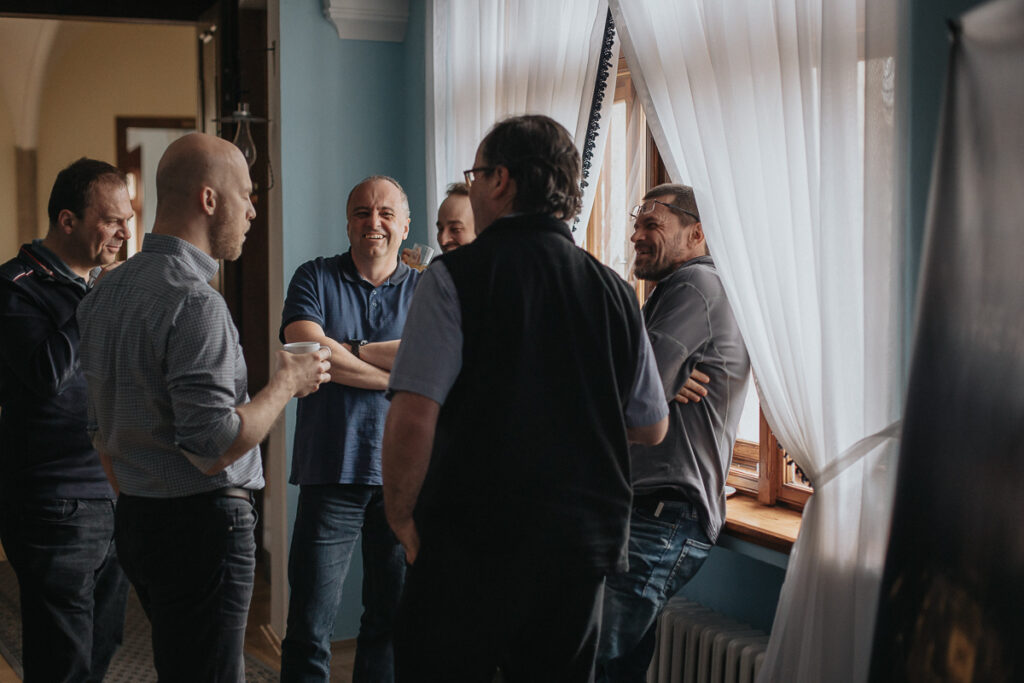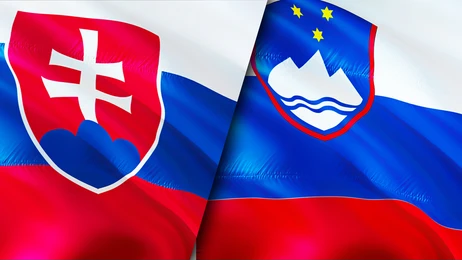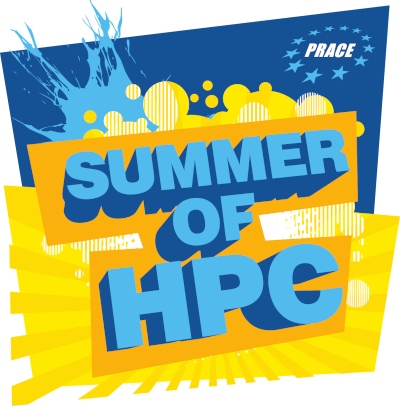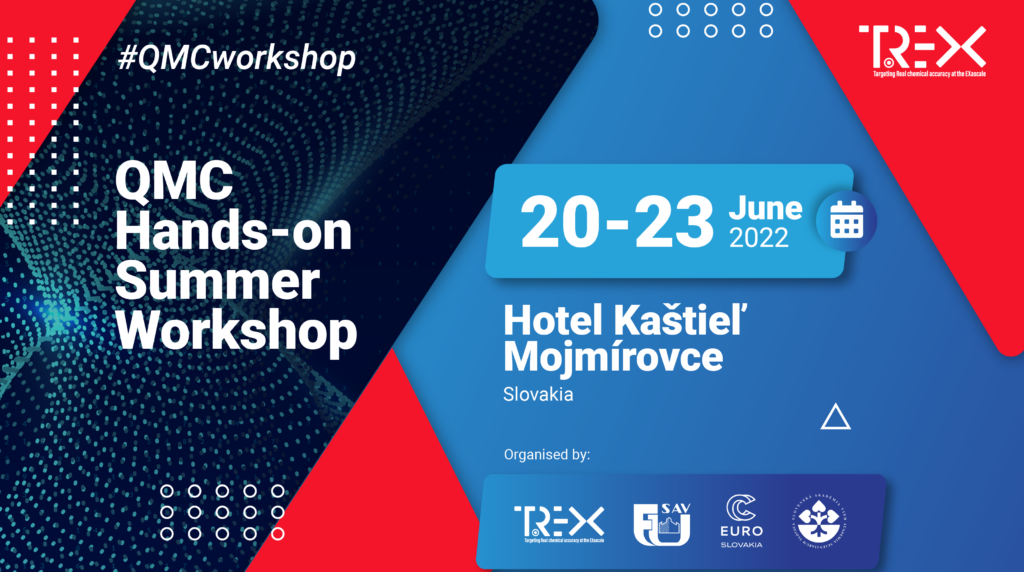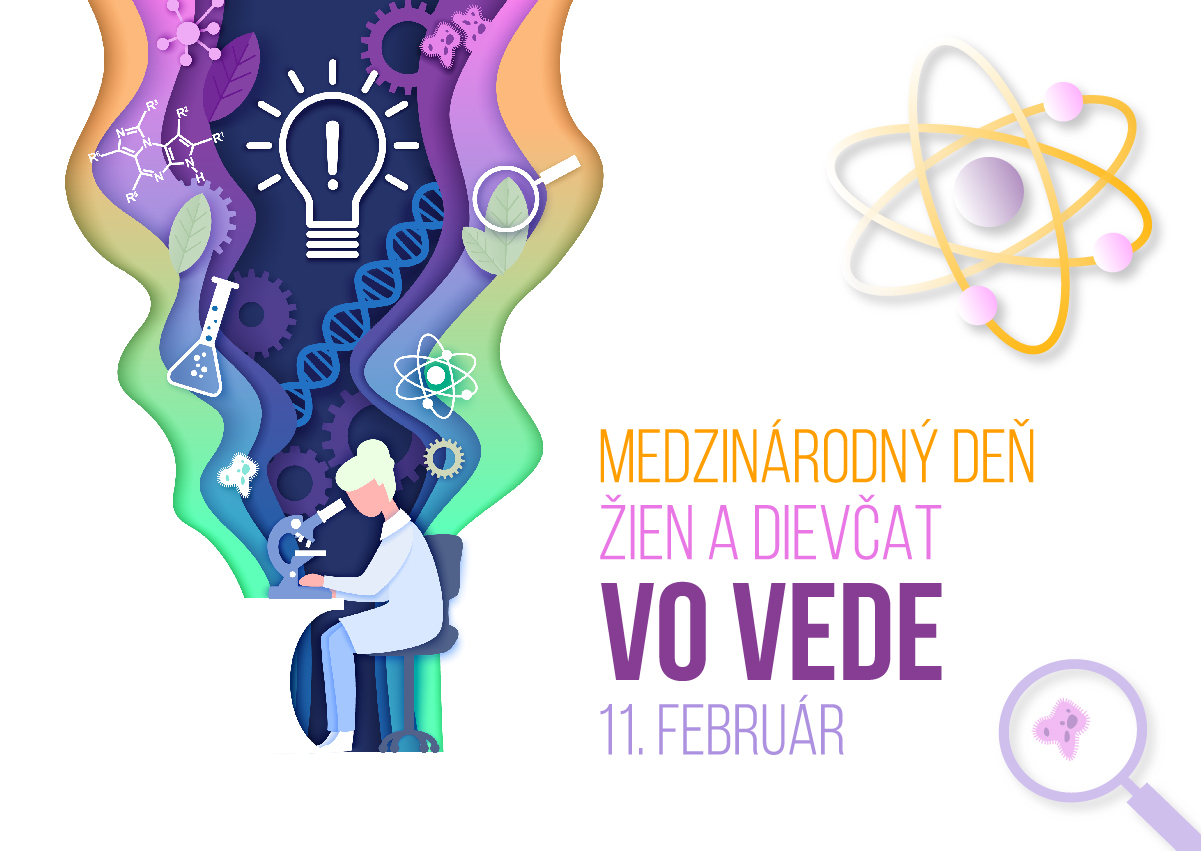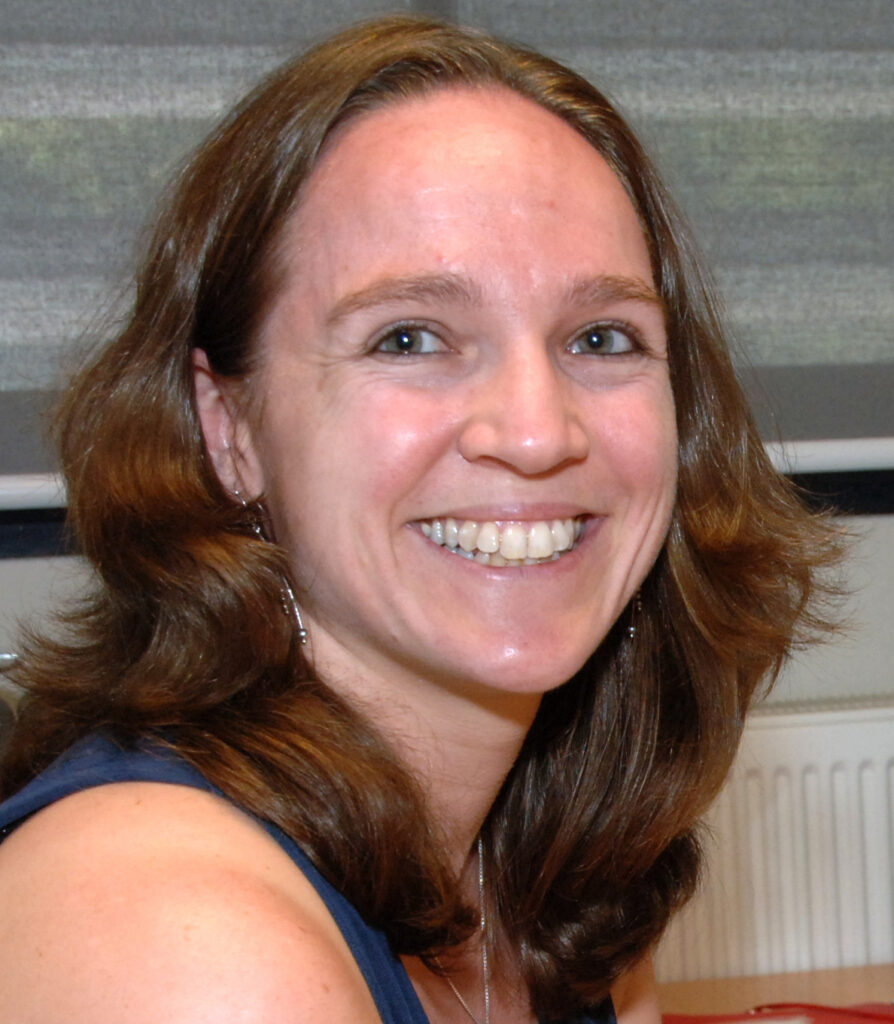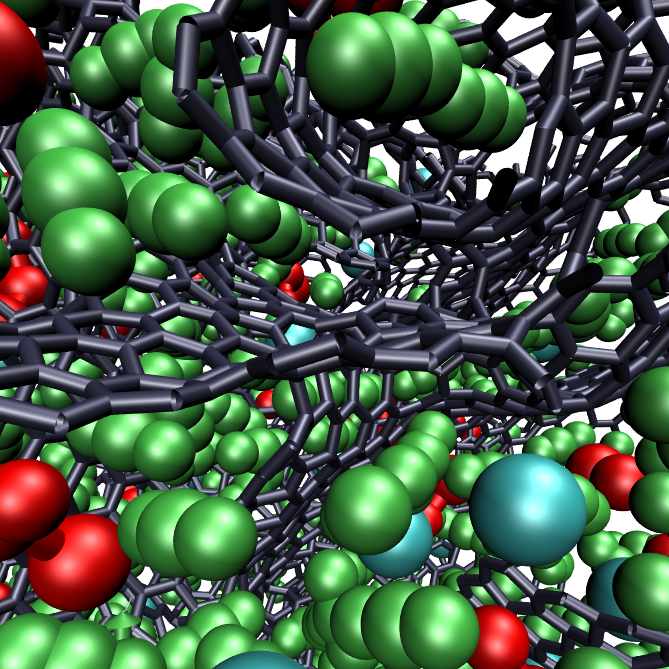QMC Hands-on Summer Workshop
The QMC Hands-on Summer Workshop was held in Slovakia on June 20-23, 2022. Workshop was organised by TREX project, National Competence Centre for HPC (NCC for HPC), Slovak Academy of Sciences (SAS) and the Institute of Physics SAS.
The workshop took place in person in the manor house Mojmírovce in Slovakia and participants had the opportunity to gain a comprehensive theoretical overview and practical experience with quantum Monte Carlo methods and their molecular (Quantum Package and CHAMP codes) and periodic systems (TurboRVB). Lectures and trainings was led by experts who are part of the European Center of Excellence TREX.
The workshop was started with an introductory speech by Ivan Štich, who also introduced the participants to the benefits of using QMC methods. The basics of quantum Monte Carlo methods were explained by prof. C. Filippi from the University of Twente, located in Enschede, the Netherlands, is one of the best public technical universities in the world. Participants during the first two days under the leadership of prof. Filippi and Anthony Scemama from the French National Centre for Scientific Research (Centre national de la recherche scientifique – CNRS) also completed hands-on training to test their skills in QMC methods.
The third day of the workshop focused on advanced methods of quantum Monte Carlo, which was introduced to the participants by Sandro Sorella from the Italian International School for Advanced Studies (Scuola Internazionale Superiore di Studi Avanzati – SISSA). Pod vedením K. Nakano zo SISSA prebiehal ďalší hands-on tréning. Počas posledného dňa sa účastníci venovali pokročilým QMC metódam a aplikáciám a to pod vedením Ivana Šticha z Institute of Physics SAS and Michele Casula of the CNRS. The last hands-on training was led by K. Nakano from SISSA and Ivan Brndiar from the Institute of Physics of the Slovak Academy of Sciences.
Thanks to the QMC workshop, participants gained a general overview of the basics of QMC methods and their adaptation for simulations of molecular and periodic systems. They also had the opportunity to learn more about highly topical topics in molecular, crystalline and low-dimensional systems. The QMC workshop was a great opportunity to try out practical exercises and simulations using QMC using the CHAMP and TurboRVB programs.
 Success story: AI Helps Save Women’s Lives 17 Dec - Strach z rakoviny prsníka je tichým spoločníkom mnohých žien. Stačí jedno pozvanie na preventívne vyšetrenie, jeden telefonát od lekára či jedno čakanie na výsledky – a myseľ je plná otázok: „Som v poriadku?“ „Čo ak nie?“ „Môže sa niečo prehliadnuť?“
Aj keď skríning potvrdí negatívny nález, obavy často pretrvávajú.
Success story: AI Helps Save Women’s Lives 17 Dec - Strach z rakoviny prsníka je tichým spoločníkom mnohých žien. Stačí jedno pozvanie na preventívne vyšetrenie, jeden telefonát od lekára či jedno čakanie na výsledky – a myseľ je plná otázok: „Som v poriadku?“ „Čo ak nie?“ „Môže sa niečo prehliadnuť?“
Aj keď skríning potvrdí negatívny nález, obavy často pretrvávajú.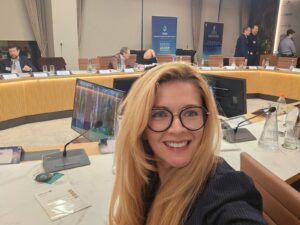 VICE and the Digital Twin at the Pre-Christmas Hydrogen Infoday 11 Dec - Dňa 10. decembra 2025 sme sa zúčastnili podujatia Predvianočný vodíkový Infoday v Bratislave. Súčasťou programu bola prezentácia VICE – Vertical Integrated Cyclic Energy, Hydrogen, vedená Laurie Farmerom a Luciou Malíčkovou.
VICE and the Digital Twin at the Pre-Christmas Hydrogen Infoday 11 Dec - Dňa 10. decembra 2025 sme sa zúčastnili podujatia Predvianočný vodíkový Infoday v Bratislave. Súčasťou programu bola prezentácia VICE – Vertical Integrated Cyclic Energy, Hydrogen, vedená Laurie Farmerom a Luciou Malíčkovou.  Strengthening Slovak–Romanian Cooperation and the Development of Scientific Partnership 8 Dec - Romania’s National Day is a significant historical milestone commemorating the Great Union of 1918, when Transylvania, Bessarabia, and Bukovina united with the Kingdom of Romania. This moment laid the foundations of the modern Romanian state and remains a powerful symbol of national identity and unity to this day.
Strengthening Slovak–Romanian Cooperation and the Development of Scientific Partnership 8 Dec - Romania’s National Day is a significant historical milestone commemorating the Great Union of 1918, when Transylvania, Bessarabia, and Bukovina united with the Kingdom of Romania. This moment laid the foundations of the modern Romanian state and remains a powerful symbol of national identity and unity to this day.
